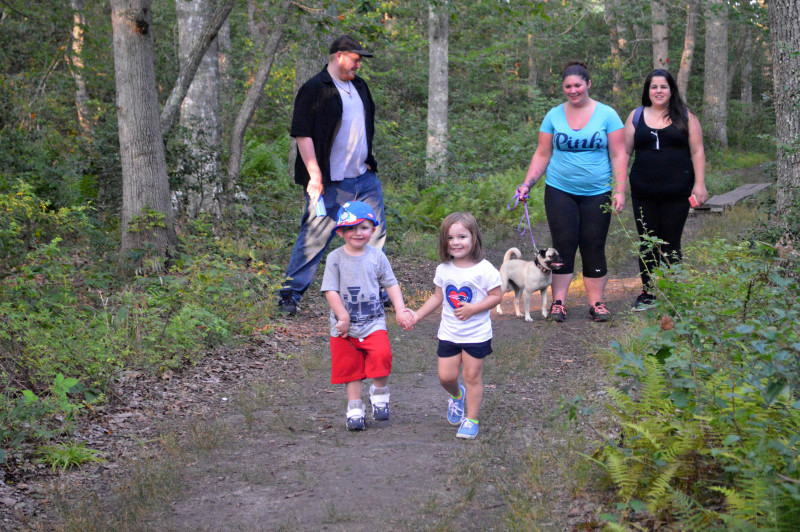Cornell Farm
The idyllic pastures and sweeping salt marsh views at Cornell Farm in Dartmouth will captivate nature lovers of every age. At this popular Trustees property, you can discover the special relationship between the South Coast’s farms and the surrounding natural world.
Features

Cornell Farm is a great place for families to take a nature walk, even if you’re new to hiking.
A journey through Cornell Farm rewards visitors with views of peaceful woodlands, flowing creeks, and lush salt marshes. It’s a great spot for everyone, especially new hikers and families who want to introduce their children to the outdoors.
At the end of the walk, a series of three boardwalks ferry visitors into neighboring Frank Knowles/Little River Reserve. Elevated safely over fragile saltmarsh and freshwater wetlands, visitors can watch for birds and wildlife utilizing these rich, important habitats.
Trails
The trail through Cornell Farm starts at the parking area near a barn and greenhouse. Round trip, the journey is about 1.5 miles; we recommend you budget at least an hour to explore and enjoy this special place. (Download trail map)
Begin on the marked path through a lovely garden and cultivated fields. This is a private homestead, so make sure you follow all posted signs. As you walk into the woods, watch your step – the trail can get wet and muddy in places! You’ll soon reach a boardwalk that leads you through the wide, open salt marsh. Take a seat on one of the benches and soak up the stunning scenery.
Keep walking a little further into Frank Knowles/Little River Reserve, and you’ll be rewarded with a lovely walk down the boardwalk. For hikers of all ages, it’s a fabulous destination that we highly recommend you discover. Frank Knowles/Little River Reserve is home to nearly nine miles of trails, so you can extend your hike for hours here.
Habitats & Wildlife
Part of what makes Cornell Farm so unique is its natural habitats. A mixed forest of pine and oak trees separates the active farm from the salt marsh. These are the headwaters of Little River, which flows to Buzzards Bay. As you sit, look for ospreys soaring overhead or herons and egrets stalking fish at the marsh edge. Crabs sometimes make an appearance here, as do woodland creatures like deer, chipmunks, and foxes.
